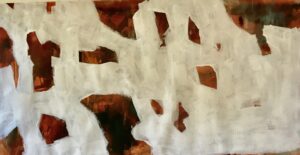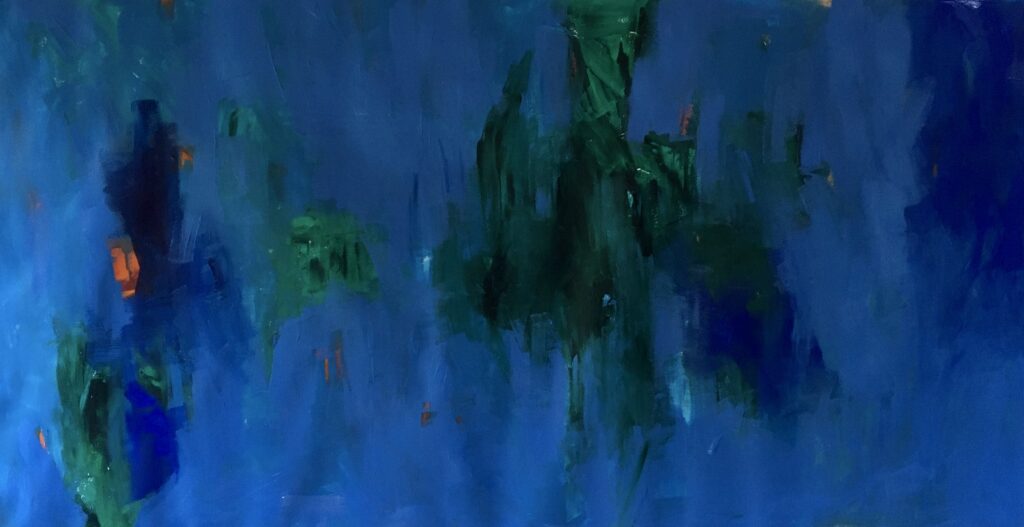There have been considerable developments since the last post as I work through all of the various elements…just keeping ‘all the balls in the air.’
My work in the studio.
The main change in my work is about the process. As I’ve learnt to understand more about composition I am finding that the surface of the painting has become like an infinitely unfolding musical score, which begins with just sounds that may at first be acceptable or jarring, but the more you open up to it, the deeper the revealing.
It has become that for me with painting. In the last post I wrote about the process of a piece of work I was doing as the seasons were changing. The change of season brought new colours and a different range of sounds. After a couple of weeks of work, I destroyed what I had done because I wasn’t hearing the sound. So I covered the surface with areas of gesso – this was completely revitalising!

The sounds I was hearing about the change of season were ‘slowing down sounds’, a ‘breathing out’ after the summer noise so there needed to be stillness in the painting. So, still working on the same image, I decided to cover the above surface with one colour to experiment. This is a completely new creative image for me and I found it exciting. Photographing it in the studio is not easy and this image hasn’t picked up the vibrancy of the blue.

Once again I’m not convinced that the image doesn’t have more to tell me so it remains pinned up and the dialogue continues. But it has been an important piece for me in terms of where I place the final exhibition. An artist friend came to the studio the other day and stood for quite some time in front of this painting. In our discussion it became clear that for him, the viewer, the painting was also setting up a dialogue and he was enjoying the space for this to happen. Placing these paintings in a garden setting, while reflecting the inspiration gained from the garden in their making, I began to see did not provide the uncluttered space for the painting and the viewer to communicate. The garden is a busy place with its own set of sounds and stimuli, noisy in fact! These paintings are deeply contemplative for the viewer who wants to listen and I could see that there was the need to respect this and provide them with the space they deserved.
The next day I began to research local spaces to hang the art. I think I have found one which I have visited many times and which had spaces available around March to May next year. This process of allowing the dialogue with the painting, begun in the studio between artist and image, to continue its revelatory expression to include viewers to an exhibition is a vital element of where the exhibition happens. Not everyone who attends an exhibition will be looking for that connection or be listening for the sounds but some will and I want to be sure that the space allows it to happen.
